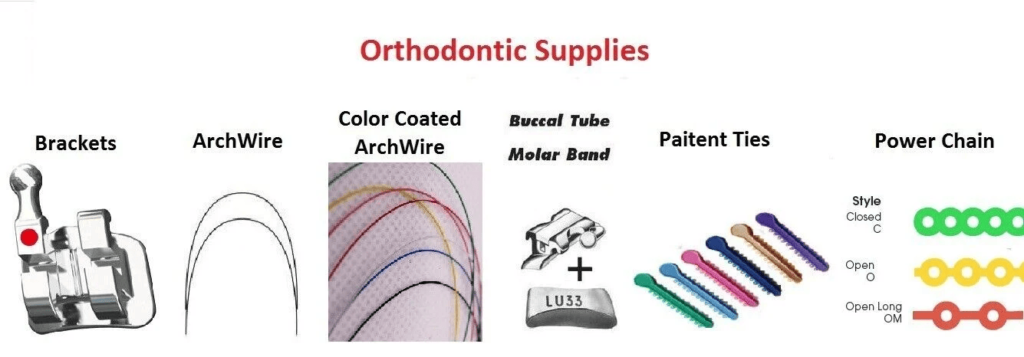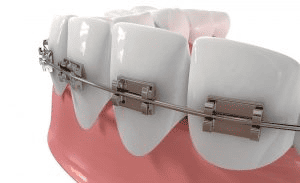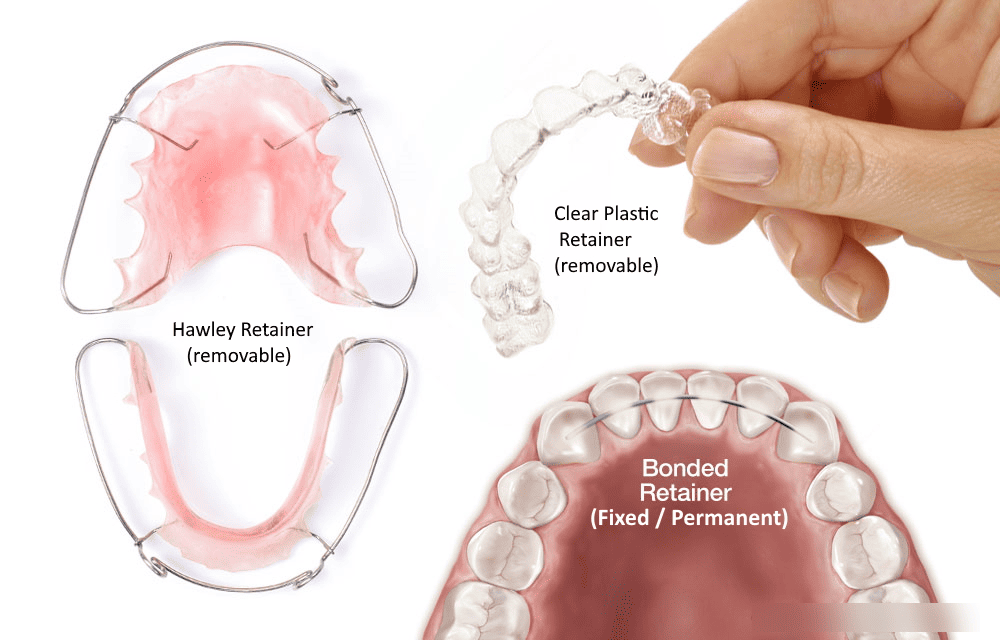Orthodontics is a branch of dentistry that focuses on correcting the position of teeth. Correcting the irregularities in the positioning of teeth and jaws improves both the function and appearance of teeth. Common orthodontic treatments include braces, aligners, and retainers. Dental orthodontic materials are used in the construction of these orthodontic appliances. These materials play a crucial role in achieving optimal oral health and aesthetics.
In this article, we’ll look at different types of dental orthodontic materials for example metals, ceramics, polymers, and composites. We’ll also discuss various factors that influence the selection of these materials in orthodontic practice.

Types of Dental Orthodontic Materials:
Various dental orthodontic materials are used to diagnose, treat, and manage orthodontic issues. They can be categorized based on their functions and material types. These materials include brackets, archwires, adhesives, ligatures, elastics, retainers, aligners, and auxiliary devices among others.
The type of material suitable for your dental practice relies on the demands of each case. For instance, when a patient requires braces, you would typically use brackets (metal, ceramic, or self-ligating) and archwires (stainless steel, nickel-titanium, or beta-titanium.
The material is chosen very carefully by the orthodontist to ensure a comfortable and effective orthodontal treatment. For the modern dental needs of patients, it is crucial to opt for state-of-the-art dental orthodontic materials. Elevate your practice by choosing Aidite, known for its innovative Dental Materials. Here is dental orthodontic materials list:
Brackets Orthodontic Materials
Brackets are a part of orthodontic braces. These brackets are attached to the front of the teeth and they act like handles holding the archwire. Brackets work by transmitting forces from the archwire to the teeth. This force gradually moves the teeth to the desired position over time.

Self-ligating Brackets:
These brackets use a built-in mechanism to hold the archwire in place which eliminates the need for elastic ties. This results in lowered friction resulting in a smooth tooth moment.
Lingual Brackets:
If you are looking for brackets that are invisible lingual rackets are the right option for you. These brackets are attached to the back of your teeth which makes them more pleasing aesthetically.
Orthodontic Bracket Materials
Several orthodontic bracket materials are available that are chosen based on their specific properties like biocompatibility, durability, and aesthetics. Here are some commonly used orthodontic bracket materials
- Stainless steel
- Gold
- Ceramic
- Titanium
- Plastic
- Composite
Archwires Orthodontic Materials
Archwires are crucial components of braces that guide your teeth. Achwires connect the braces applying continuous pressure. It returns the teeth to their normal position. The types of orthodontic wire materials depend on the stage of the treatment. In the beginning of braces, elastic wires are used and stiff wires are used at the end of the treatment.
Different materials like stainless steel, Nickel-Titanium, Beta-Titanium, Cobalt-Chromium, etc are used for making archwires. These materials provide a different set of characteristics.

Here are different types of archwires based on shape:
Round Orthodontic Archwires
Round archwires are dental orthodontic material wires with a circular cross-section. These are ideal for the beginning phase of treatment because these wires are flexible. Orthodontists prefer these because they do not damage the bracket in the initial phases and align teeth.
Rectangular Orthodontic Archwires
Rectangular Archwires are used in the later stages of orthodontic treatments for advanced control and precision. Rectangular wires are less flexible and fit snugly into the bracket slot.
Retainers Orthodontic Materials
Retainers are used after orthodontic treatments such as braces or aligners. They are used to prevent teeth from shifting back to their original position. Without the use of retainers, teeth can become misaligned due to chewing or grinding. As the name suggests, retainers retain the teeth in their new position. The following are different types of retainers:

Clear Retainers
These are custom-made retainers that fit over your teeth. Clear retainers are made from plastic and are virtually invisible. These are removable and comfortable.
Hawley Retainers
Hawley retainers made from stainless steel wires are bent around the front teeth to help hold them in position. In contrast to fixed retainers, they can be removed while eating, drinking, or brushing.
Permanent Retainers
Permanent retainers are fixed retainers bonded directly onto the teeth using orthodontic band cement. The wire of permanent retainers is glued to the inside surface of the teeth, where it is not visible when smiling or speaking.
Adhesives and Bonding Orthodontic Materials
To ensure that brackets, retainers, and other orthodontic appliances are fixed in place orthodontic bonding materials are used. For example, orthodontic bond cement is used to bond metal or ceramic bands to the back molars during the initial stages of orthodontic treatment.
Ligatures Orthodontic Materials
Ligatures are small but crucial dental orthodontic materials used to hold the archwires in place within the brackets. Based on different materials here are some types of ligatures:

Rubber Ligatures
These ligatures are made of elastic rubber or silicon materials and they come in various colours. These are popular especially among children and teenagers, because they can be customized to match their preferences. Over time, they can lose their elasticity, which may reduce their effectiveness and require frequent replacements.
Wire Ligatures
These ligatures are made of steel and don’t stretch. Instead, the wire is twisted around the bracket to hold the archwire securely. They are more stable than elastic ligatures because they do not lose their tension over time.
How to Choose the Right Orthodontic Material
You should consider several factors to ensure successful treatment outcomes and patient safety. Here’s a detailed breakdown of the factors to consider when choosing dental orthodontic materials:
Biocompatibility
The dental orthodontic material should be biocompatible meaning it should not cause an immune response or any irritation in the body. If the material is not biocompatible it can lead to allergic reactions ending up in various problems. Materials like stainless steel, ceramic, and titanium are generally considered biocompatible.
Mechanical Properties
Dental orthodontic material should be able to withstand high chewing forces in the mouth. It should not compress or bend. These materials should be strong enough so they don’t crack or chip under high pressure but they should be flexible enough to avoid brittleness.
Aesthetics
Aesthetics are a very important part of orthodontic treatments. Many patients prefer orthodontic materials that blend with their natural teeth.
Wear Resistance
Chewing forces can cause wear to the dental orthodontic materials. So to ensure smooth working these materials should wear resistance. It’s crucial to choose materials that do not damage the tooth enamel during treatment.
Conclusion
In conclusion, in modern dentistry orthodontic materials and instruments play a crucial role in correcting dental irregularities. Dental orthodontic materials include brackets, archwires, retainers, ligatures, adhesives, etc. Before selecting these materials you must consider factors such as biocompatibility, mechanical strength, aesthetics, and wear resistance to meet patient needs and ensure safety. Nowadays advanced materials like ceramics, titanium, and composites are used in dental treatments. To elevate treatment outcomes choosing state-of-the-art materials is nonnegotiable. By choosing high-quality materials like those from Aidite, dental professionals can elevate their practice and deliver exceptional care. Their materials ensure optimal results for patients while minimizing risks and discomfort.



